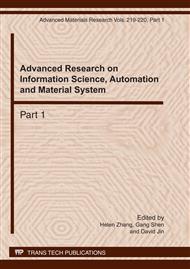p.722
p.727
p.732
p.736
p.742
p.746
p.750
p.754
p.762
Application of BP Neural Net Work and PCA in Prediction of Plant Diseases Control
Abstract:
Wheat sharp eyespot is an important plant disease of wheat roots. To improve the accuracy of prediction of this disease and to control the disease effectively, This paper presents a new prediction model by principal components analysis (PCA) and back propagation artificial neural network (BP-ANN) methods. The application of BP and PCA in forecasting plant diseases was also summarized. Application of BP Neural Network and PCA in Prediction for wheat Diseases. To build diagnosing wheat diseases based on BP neural network, and PCA was discussed. The precision of the simulation is the high, fault tolerant capacity is better, reliability, and robustness are better. The result of the forecast model is satisfied. So the model of predicting wheat disease based on adaptive neural networks has the important reference value. The test results showed to build the early warning model is effective and likely which, will provide a model to set up the effective early warning platform. Results showed that BP neural network and PCA had a strong application value in the diagnosis of plant diseases.
Info:
Periodical:
Pages:
742-745
Citation:
Online since:
March 2011
Authors:
Price:
Сopyright:
© 2011 Trans Tech Publications Ltd. All Rights Reserved
Share:
Citation:


